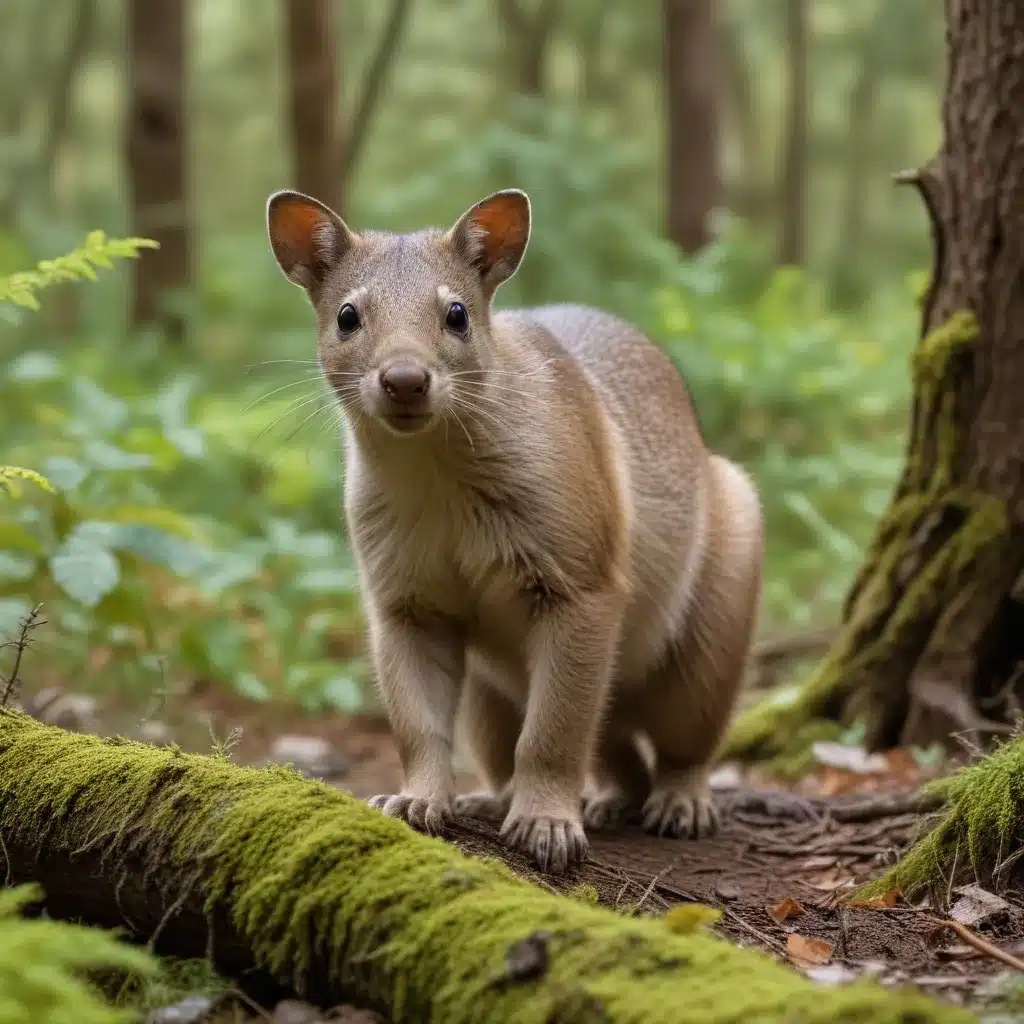
Environmental DNA
Environmental DNA (eDNA) is a revolutionary molecular technique that is transforming the way we monitor and assess wildlife diversity. By collecting and analyzing DNA fragments from environmental samples like soil, water, and sediment, researchers can detect the presence of a wide range of organisms without ever needing to observe them directly.
Molecular Techniques
The eDNA process involves carefully collecting samples, extracting the DNA, and then using high-throughput sequencing to identify the species present. Advancements in DNA extraction and sequencing technologies have made eDNA a far more accessible and cost-effective tool for biodiversity assessments. Researchers can now detect even rare or elusive species by identifying their genetic signatures left behind in the environment.
Diversity Assessments
One of the key strengths of eDNA is its ability to provide a comprehensive picture of an ecosystem’s biodiversity. Unlike traditional survey methods that may only capture a subset of the species present, eDNA can detect a wide range of taxa, from mammals and birds to reptiles and amphibians. This holistic approach allows researchers to better understand the overall health and composition of a given habitat.
Conservation Applications
The applications of eDNA for conservation are vast. Managers can use eDNA to monitor the presence and distribution of threatened or invasive species, track population trends over time, and identify critical habitats that require protection. By providing a detailed, non-invasive snapshot of an ecosystem, eDNA empowers land managers to make more informed decisions and implement targeted conservation strategies.
Wildlife Camera Traps
While eDNA is a powerful new tool, it is often most effective when combined with other monitoring techniques, such as the tried-and-true method of wildlife camera trapping. Camera traps use motion-activated cameras to capture images and video of animals in their natural habitats, allowing researchers to directly observe species presence, behavior, and interactions.
Camera Trap Technology
Modern camera traps are sophisticated pieces of equipment, capable of capturing high-quality images and videos even in low-light conditions. These compact, weatherproof devices can be strategically placed throughout an ecosystem to monitor activity over extended periods, providing a wealth of data on the resident wildlife.
Mammal Monitoring
Camera traps excel at detecting and identifying medium to large mammal species, which can be challenging to observe directly. By capturing visual records of these animals, researchers can learn about their habitat preferences, activity patterns, and population dynamics – information that is crucial for effective conservation management.
Avian Species Detection
While camera traps may be better suited for capturing larger, ground-dwelling species, they can also provide valuable insights into avian diversity. By strategically placing cameras near key resources like water sources or feeding sites, researchers can document the presence and behavior of a wide range of bird species, including those that may be difficult to observe through traditional survey methods.
Ecosystem Biodiversity
By combining the power of eDNA and camera trapping, researchers can gain a more comprehensive understanding of the overall biodiversity within a given ecosystem, from the smallest microorganisms to the largest megafauna.
Mammalian Diversity
eDNA has proven to be particularly effective at detecting the presence of elusive or rare mammal species that may go unnoticed using traditional survey methods. These molecular techniques have uncovered the presence of small- to medium-sized mammals, such as rodents, bats, and mustelids, that are often difficult to observe directly.
Avian Diversity
While eDNA may be less effective at detecting avian species compared to larger mammals, the combination of eDNA and camera trapping can provide a more complete picture of a habitat’s bird diversity. Camera traps can capture the presence and behavior of a wide range of bird species, while eDNA can help identify species that may be more difficult to observe visually.
Habitat Characterization
By examining the suite of species detected through both eDNA and camera trapping, researchers can gain valuable insights into the overall health and characteristics of a habitat. The presence or absence of certain species, as well as their relative abundance, can serve as indicators of ecosystem function, resource availability, and environmental conditions.
Integrative Approaches
The most effective wildlife monitoring programs often employ a combination of techniques, each one complementing the others to provide a more comprehensive understanding of the ecosystem.
eDNA and Camera Traps
When used together, eDNA and camera traps can provide a powerful, synergistic approach to biodiversity assessment. eDNA can detect the presence of a wide range of species, while camera traps can offer visual confirmation and additional behavioral data. This integrative approach helps to overcome the limitations of each individual method, resulting in a more accurate and holistic representation of the ecosystem.
Multimodal Monitoring
Beyond just eDNA and camera traps, successful wildlife monitoring programs often incorporate a diverse array of techniques, such as traditional field surveys, acoustic monitoring, and satellite tracking. By employing a multimodal approach, researchers can gain a more complete understanding of the ecosystem, including the distribution, abundance, and interactions of the resident species.
Informing Management
The wealth of data generated through these integrated monitoring efforts can be invaluable for informing conservation and land management decisions. By identifying key species, detecting emerging threats, and characterizing habitat conditions, land managers can develop targeted strategies to protect and restore the ecosystem’s biodiversity.
At Mika Birds Farm, we recognize the importance of comprehensive wildlife monitoring for effective avian conservation. By combining the power of eDNA, camera traps, and other innovative techniques, we are able to gain a deeper understanding of the avian diversity that thrives on our property and in the surrounding region. This knowledge, in turn, informs our management practices and helps us create optimal habitats for the birds we care so deeply about. To learn more about our integrated approach to avian conservation, please visit our website at mikabirdsfarm.com.


